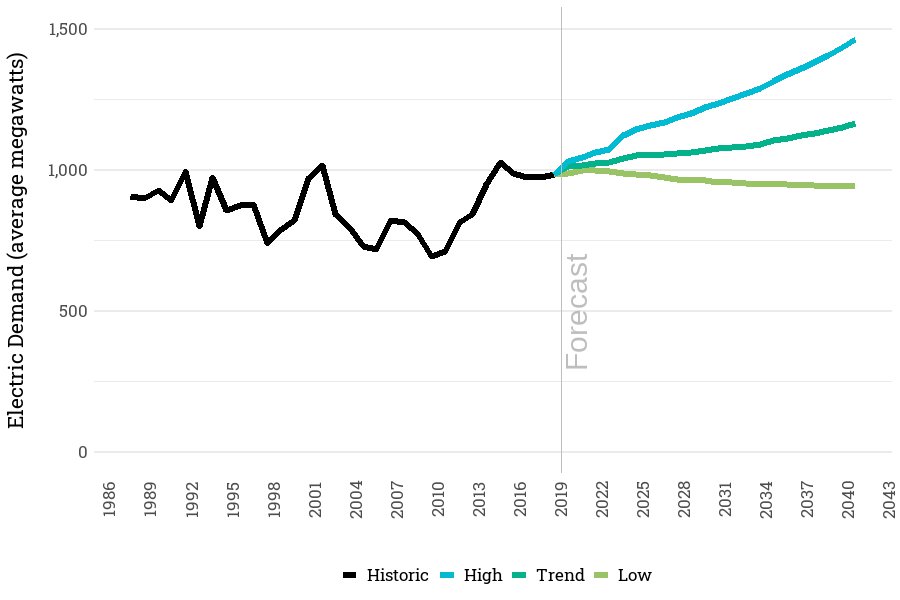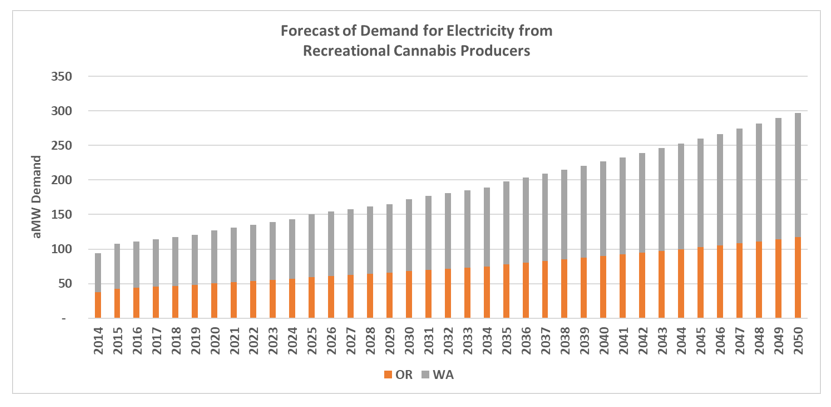Regional demand in this sector is relatively small compared to the residential, commercial, and industrial sectors. Agriculture and irrigation averaged about 690 average megawatts per year between 1986 and 2018. The electricity consumption in this sector is forecast to grow at a rate of between -0.3 and 1.7 percent annually for the forecast period 2021-2041. It should be noted that demand for irrigation services is highly dependent on availability of water and so it is very likely that as a result of droughts, demand for water from subsurface reservoirs push the demand for irrigation even higher than forecasted. Electricity demand for food product manufacturing (fruits, meats, and dairy) is included in the industrial sector forecast. Demand for indoor growth of recreational cannabis is another factor pushing demand electricity. This demand is included in the irrigation/agricultural load shown below. More detailed information on the agricultural sector forecast is available here.
Agricultural Irrigation Load Forecast (average megawatts)

Indoor Agriculture/indoor Cannabis Production Load
A fairly newcomer to the agricultural and irrigation load is demand for power for indoor agricultural loads from growers of cannabis. In the two states of Oregon and Washington, recreational use of cannabis is allowed. The Council has analyzed the consumption pattern for cannabis and has developed a load forecast for this sector. Further details on the estimation of load for Cannabis production (excluding processing and retail operations) was presented in the 7th Plan- appendix E pages 60-64.
Forecast Demand for Electricity from Recreational Cannabis Producers




